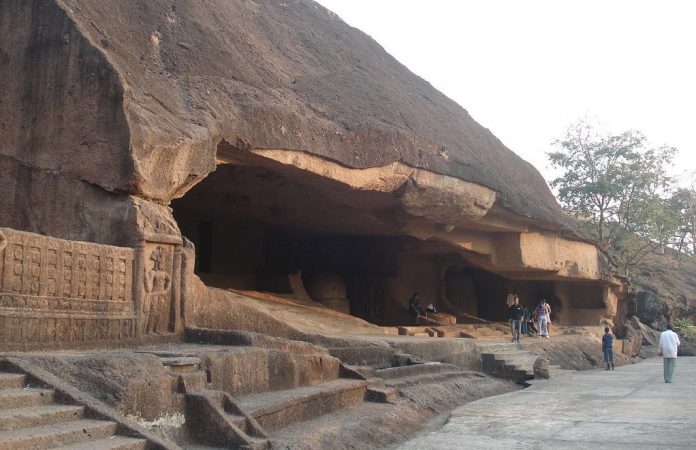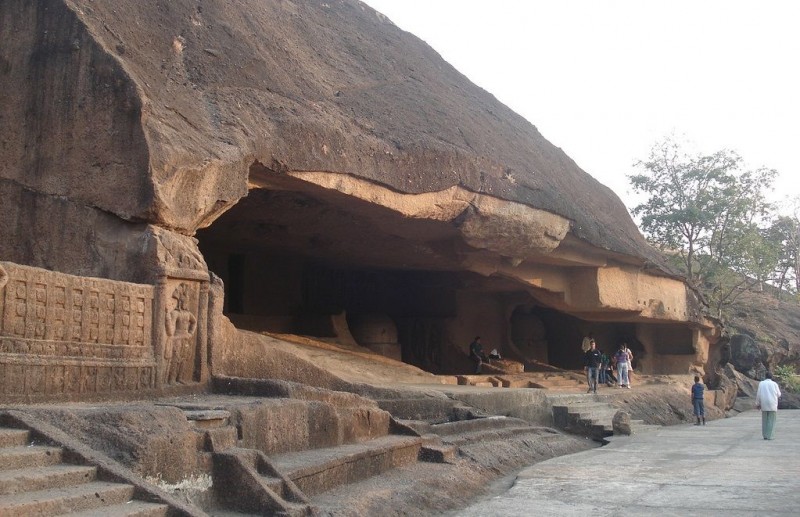
The caves are older than the Kanheri ones and were possibly built for sheltering monks in the monsoon.
Seven new caves have been discovered in Mumbai’s Sanjay Gandhi National Park that are possibly dated between 1st century BC and 5th-6th century AD. The caves are Buddhist ‘viharas’ (residences for monks) that served as shelters from monsoons for Buddhist monks more than 2,000 years ago. One of the caves has the ruins of a harmika or the top part of a stupa.
These are not the only Buddhist caves in the park, which is the biggest park inside any city in the world. About 160 other caves, named the Kanheri Caves, are nearby and were dug about 2,000 years ago. The Kanheri Caves are famous for their water management and rain water harvesting systems.
The newly discovered caves may have been older than the Kanheri Caves as they were simpler in form and they lacked water cisterns, which are found in the more evolved architecture of Kanheri.
While a formal approval from the Archaeological Survey of India (ASI) is awaited for detailed exploration and documentation of the new caves, the team that has discovered the caves date them between 1st century BCE (or BC) and 5th-6th century CE (or AD).
The discovery was made in February 2015, and is said to be the result of a systematic survey of the area. The credits of this discovery goes to a three-member team that carried out this job under an excavation programme, which was jointly conducted by the Centre for Archaeology, Mumbai University, and the department of ancient Indian culture, Sathaye College, Vile Parle.
Before beginning actual field work, the team studied documentary topography and water resources. Ancient people constructed most of viharas near sources of water. Aside from that, they also studied Pali texts, which described similar ‘viharas’ of Buddhist monks around Rajgir in Bihar. The researchers studied areas and texts for three months.
They began their exploration as soon as the forest department gave their permission. After a day, another team of a magazine editor and a student of Buddhism at Sathaye College, found two more caves.
“The newly discovered caves may have been older than the Kanheri Caves as they were simpler in form and they lacked water cisterns, which are found in the more evolved architecture of Kanheri. Moreover, we found monolithic tools which were prevalent in the 1st century BC. The absence of water cisterns also indicate that monks lived there in the monsoon,”said team leader Suraj Pandit in a quote given to The Times of India.
One of the caves was actually inhabited till recently and was even surfaced with modern bathroom tiles. It had been used by one of the sadhus living in the park till the Bombay high court, in the late ’90s, ordered the eviction of all sadhus from the park.
“There were caves on either side of the waterfall – three on one side and two on the other. It was very clear these were excavated from the natural rock. The smooth curve, the plastering, the door beams, the benches to sleep on, were all indications that these were man-made caves,” said Pandit.

Maharashtra is home to the largest number of caves in India. Some of these caves, like Elephanta Caves, Karla Caves and Bhaja Caves, boast of stunning rock cut architecture. On the other hand, those at Ajanta and Ellora have been adorned with beautiful paintings. Whatever be the mode of presentation, these caves majorly illustrate the history of Buddhism in India.
Most of the ancient caves in Maharashtra have been accorded the status of World Heritage Sites by UNESCO and continue to enchant visitors from the remote corners of the country as well as the world.


